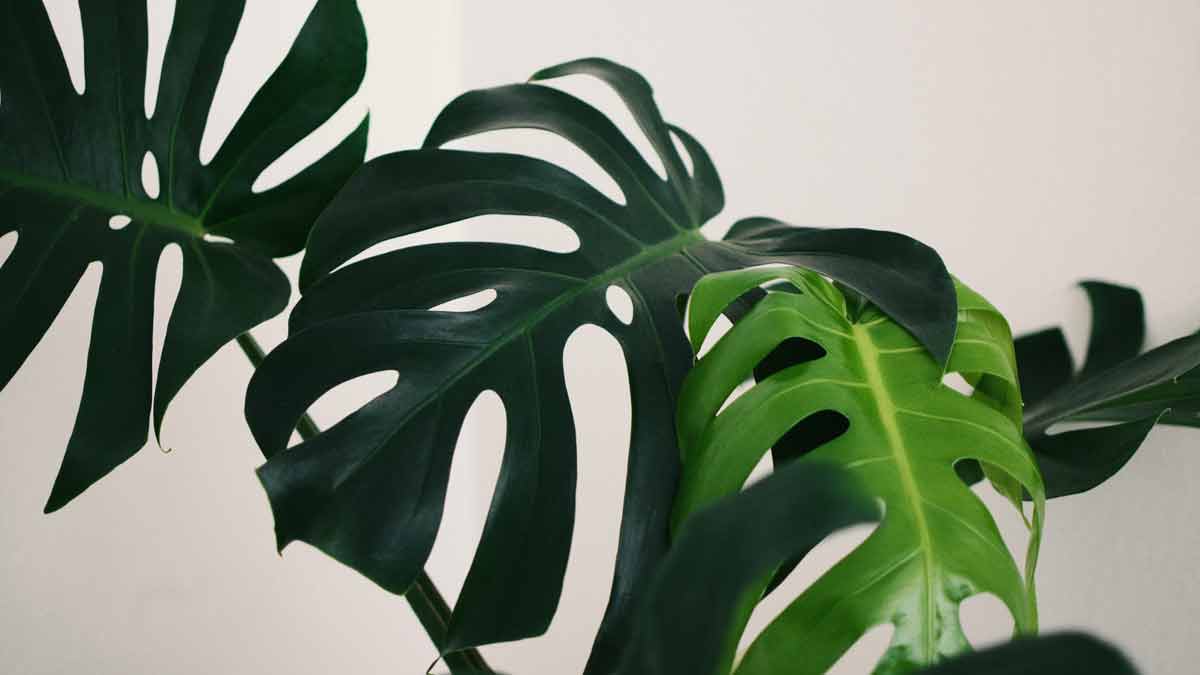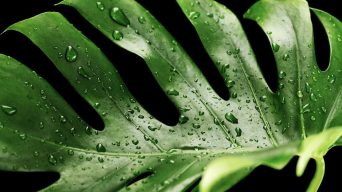Monstera plants can survive in low light but won’t thrive as they do with bright, indirect light. They cannot grow in complete darkness but can adapt to low light. Adequate light exposure helps them grow healthily, but they won’t grow in very dark places like basements or unlit bathrooms.
Monstera plants, also known as the Swiss cheese plant or split-leaf philodendron, have become increasingly popular for their unique foliage and easy-care nature.
With their luscious leaves, these tropical houseplants can add a touch of the exotic to your home décor.
But to keep them healthy and thriving, it’s important to understand how much light Monstera plants need.
So can Monstera live in low light? The answer is yes – but there are some tips you should follow if you want your Monstera plant to stay happy and healthy!
Monstera’s Low Light Tolerance
Monstera plants have a moderate tolerance for low light.
They usually do their best in bright, indirect sunlight and may even tolerate full sun.
But Monstera plants can also survive in low light conditions, although they may grow slower and produce fewer leaves.
It’s important to note that the amount of light your Monstera receives will affect the rate of leaf growth and overall health.
Can Monstera Plants Grow in Complete Darkness?
Monstera plants cannot grow in complete darkness as they need light for photosynthesis.
Photosynthesis is the process by which plants convert light energy into chemical energy to fuel their growth and development.
Monstera plants will struggle to produce enough energy to sustain themselves without sufficient light.
However, the Monstera plant can still live in low light, albeit at a slower growth rate.
How Do Monstera Plants Adapt to Low Light?
While Monstera plants cannot grow in complete darkness, they can adapt to low light conditions.
They can adjust their metabolism and reduce their energy consumption when light is limited. This means that Monstera plants can live with less light than other plants but won’t grow as quickly or produce as many leaves.
In addition, Monstera plants can adjust their leaf size to capture more light.
The larger leaves help absorb more light energy and give the Monstera plant enough energy for photosynthesis.
Effects of Minimal Light on Photosynthesis and Leaf Structure
Photosynthesis requires a certain amount of light intensity to occur.
When there is minimal light, photosynthesis slows down or stops altogether. This affects the plant’s ability to produce food and grow new leaves.
In addition, low light can cause the leaves of Monstera plants to become smaller and thinner than usual as the plant tries to conserve energy.
When grown in low light conditions, Monstera plants will look leggy as they stretch out towards the light source, a process called etiolation.
This causes the leaves to become thinner and taller than normal in an effort to absorb as much light energy as possible.
Adequate Light Exposure for Monstera
Adequate exposure to light is crucial for the growth and health of Monstera plants.
These plants are native to the tropical forests of southern Mexico and require bright indirect sunlight to thrive.
In their natural habitat, they grow under the canopy of trees, where they receive filtered sunlight.
Monstera plants need at least 4-6 hours of indirect sunlight every day to stay healthy and produce new leaves.
Monstera plants should be placed near a window that receives bright, indirect sunlight when grown indoors.
An east- or west-facing window is ideal, as it will provide enough brightness without direct sunlight, which can burn the leaves.
Direct sunlight can scorch their leaves and cause sun damage.
If you don’t have a window that receives enough light, you can use artificial lights like grow lights to provide adequate light exposure.
When grown outdoors Monstera plants should be placed in a spot that receives morning or evening sun.
This will give them enough light while also protecting them from the harsh midday sun.
It’s important to remember that Monstera plants won’t grow in very dark places like basements or unlit bathrooms, so choosing an area that receives plenty of natural or artificial light is best.
Tips for Growing Monstera in Low Light
Monstera plants are tolerant of low light and can adjust their metabolism when there is limited light.
However, to ensure your indoor plant stays healthy and continues to grow, there are a few tips you can follow:
- Keep the soil moist but not soggy. Check the soil daily and water when it is dry to a depth of 1 inch. Overwatering can be just as detrimental to a Monstera’s health as too little water.
- Give your Monstera the humidity it needs by misting its leaves or placing a humidifier nearby. High humidity levels are essential for plants growing in low light conditions.
- Place your Monstera in an east- or west-facing window where they will receive bright indirect light throughout the day.
- Use a balanced fertilizer to provide the necessary nutrients and minerals.
- Move your plant away from drafts which will cause it to dry out quickly in low light situations.
- Be sure to wipe the leaves weekly with a damp cloth as this helps keep dust off and allows the leaves to absorb sunlight more effectively.
- Prune your Monstera when it has outgrown its pot and trim off dead or yellowed leaves. This will help the plant stay healthy in low light situations.
- Use a well-draining soil mix to ensure your houseplant has the right amount of drainage.
- Be sure to check the temperature of your Monstera’s environment: they should be kept at a consistent temperature between 65°F and 85°F.
- Finally, patience is key! Low light plants take longer than other varieties to grow, so don’t give up on them if it takes a while for them to show signs of growth.
With the tips above and some TLC, you can be sure your Monstera will thrive in low light conditions!
Key Environmental Factors for Low-Light Growth
Growing plants in low light conditions can be challenging, but it’s not impossible.
However, to ensure the health and thriving of your low light plants, you need to pay attention to certain environmental factors.
Humidity Levels
Low light plants typically thrive in high humidity environments.
If the air is too dry, the plant may struggle to absorb enough moisture from its surroundings.
You can increase humidity levels by placing a humidifier near your plant or by grouping it with other plants.
Alternatively, you can position a water tray in proximity to the plant or regularly spray the Monstera leaves using a misting spray bottle.
Temperature
Low light plants prefer consistent temperatures between 65 and 80 degrees Fahrenheit.
If the temperature rises above or falls below this range, it can cause stress to your plant.
Be sure to keep your home’s temperature stable and consistent, as sudden changes can be dangerous for plants that are sensitive to temperature fluctuations.
Water Quality
Water quality is also an essential factor for low light houseplants.
Chlorine and other chemicals found in tap water can be harmful to your plants over time.
It’s best to use rainwater or filtered water whenever possible. If neither option is available, let tap water sit out overnight before watering your plant.
This will help to remove some of the chemicals and make it safer for your plant.
Fertilization
Just because your plant is in low light conditions doesn’t mean it should be neglected.
You should still fertilize your low light plants regularly to encourage growth and prevent nutrient deficiencies.
Use a balanced fertilizer every two weeks during the growing season (spring through fall).
Be sure to follow the instructions on the label, as applying too much fertilizer can be harmful for your plant.
Cleaning
Dust can accumulate on the leaves of your low light plant, which can block sunlight absorption and lead to pest problems.
Regularly cleaning the leaves of your Mostera can help to keep them healthy.
Using a damp cloth or paper towel, gently wipe off any accumulated dust or dirt on the leaves.
This will allow the plant to absorb more light and make sure it has access to enough oxygen and moisture.
Removing the dust can also help prevent fungal infections from developing.
Well-Draining Soil Mix
A well-draining soil mix is essential to avoid root rot in Monstera plants when growing in environments with limited light.
A mix of peat moss, perlite, and vermiculite works well for most indoor plants.
Avoid using heavy potting soils that retain moisture as they could suffocate roots and lead to fungal infections.
Make sure to provide large drainage holes in the bottom of your pot so excess water can easily escape.
By following these simple tips, you can help ensure your Monstera has everything it needs to thrive in low light conditions.
When given the right environment and care, it will continue to be a beautiful addition to your home.
Final Thoughts
When it comes to Monstera, it’s important to remember that they need bright indirect light.
While this isn’t always possible in a home or office setting, you can still provide the appropriate light for your plant with a little creativity.
Consider using an LED grow light to supplement natural sunlight or investing in some sheer curtains and moving your Monstera closer to a window.
With the right care and attention, you can keep your Monstera thriving even in lower light settings.







